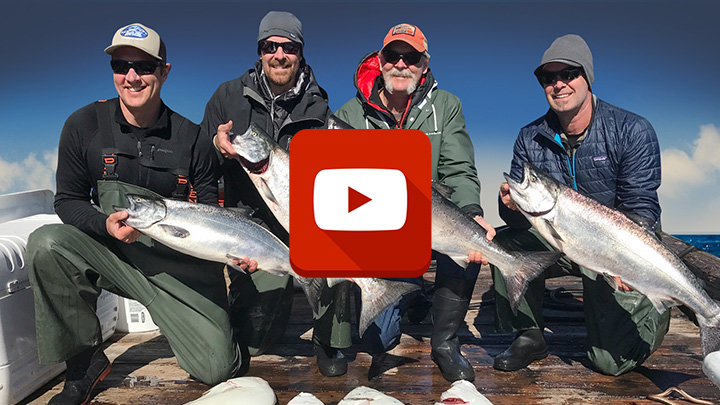Fishing Techniques
Mooching

Mooching is a fun and exciting way to catch actively feeding salmon in the saltwater. Once the boat is in position over a likely salmon feeding area your captain will have you drop a cut plug herring in a controlled spin to the ocean floor. After it hits the bottom the bait is then reeled up to a predetermined depth or all the way to the surface. When we’re fishing for king salmon it isn’t uncommon to work the baits near the bottom and when the silvers are in the baits are usually worked top-to-bottom. When the “tap-tap-tap” of a bite is detected it’s crucial to not set the hook immediately. The best approach is to simply reel into the fish and then keep reeling until the salmon is hooked and the fight is on. If you must set the hook, however, do so after the salmon has been reeled-on and has turned with the bait. Mooching is a hands-on technique where you feel the fish, hook the fish, and fight the fish. It simply doesn’t get any better!
Trolling
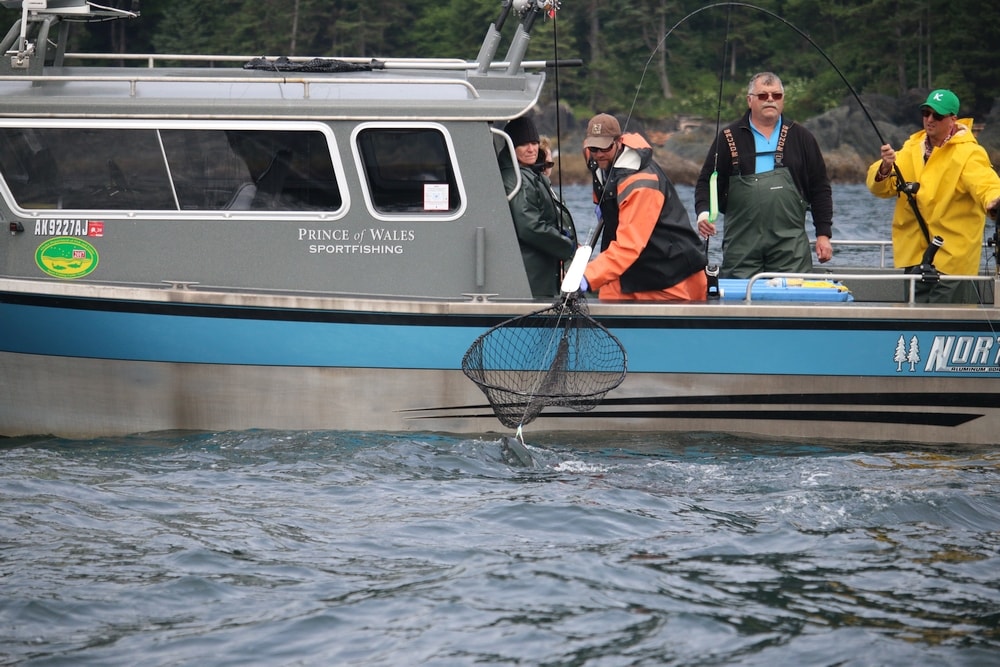
The Polar Bear is equipped with three state-of-the-art Cannon Digi-Troll 10 downriggers. All three downriggers can be fished within feet of the bottom or in the middle of the water column to search for salmon. We’ve developed flasher/hoochie and flasher/spoon combinations that are lethal for salmon in the waters around Craig. Whole herring are also very effective off the downriggers and we use them as often as possible. Trolling is a fun, relaxing, and productive technique for catching salmon.
Halibut

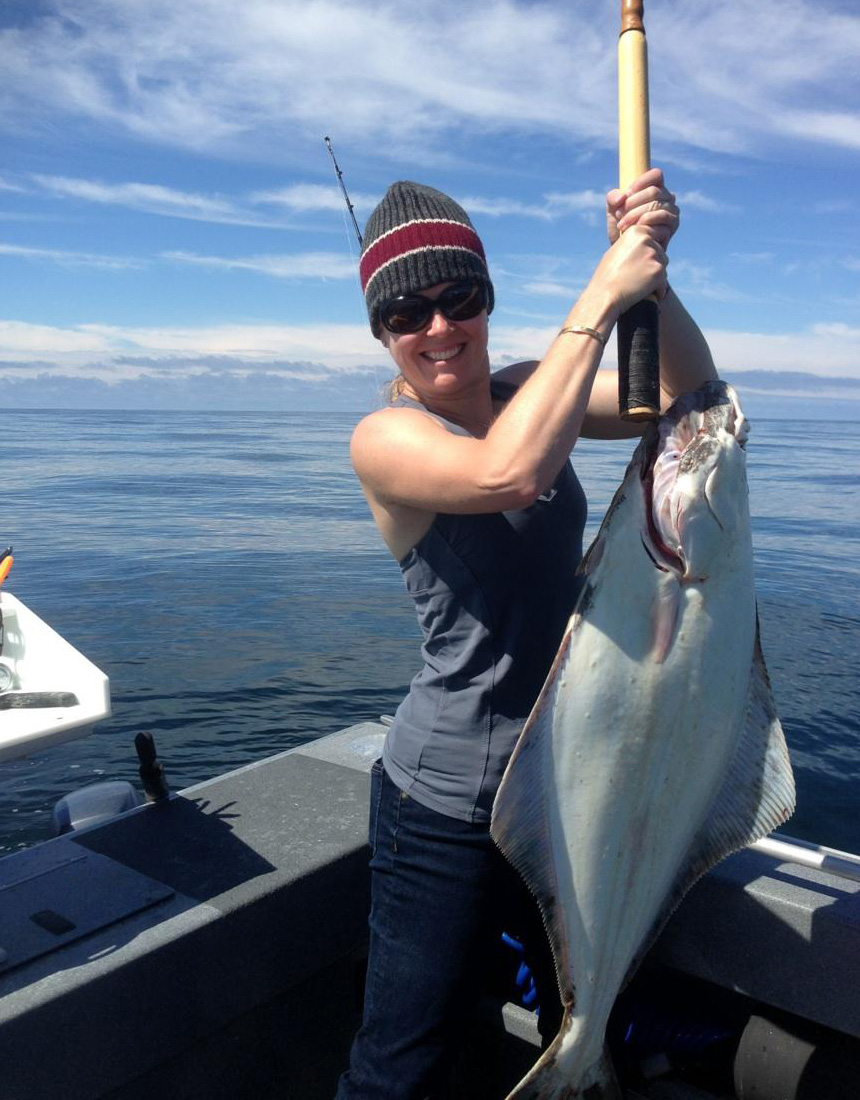

We use short and light 6’6″ jigging rods coupled with Daiwa Saltist high-speed levelwind reels for all of our halibut and bottomfishing. For halibut a one pound scampi tail jig, pipe jig, or flutter jig is extremely effective and when we’re fishing bait we’ll use the same rod/reel combo with a one pound lead and a short bait leader.
On occasion the halibut are in shallow water and we can get away with using salmon rods, but by and large most of our halibut fishing occurs in 200 to as deep as 350 feet of water. The light gear makes fighting these fish much more enjoyable and the high-speed reels make it quicker to reel up and reset for another drift.
For ling cod, yelloweye, and bottomfish we’ll use the same jigging rods that we do for halibut. If we’re in shallow water fishing for ling and rockfish we’ll often use salmon mooching rods with light flutter jigs.
Alaska Lingcod
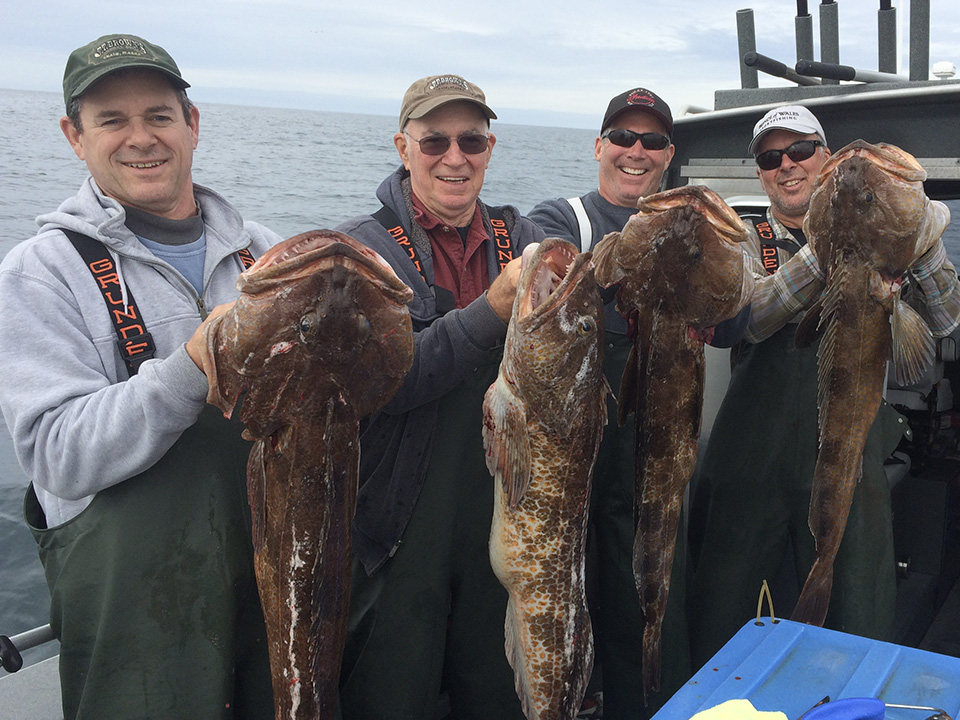
Lingcod are also associated with structure and are a ferocious predator of the deeps. They have large teeth and prey on just about any fish that swims within range. Catching a ling on a small halibut or bottomfish is quite normal and some of our largest lings are caught “hitchhiking” on a smaller fish. Lingcod are a delicious fish with white flaky meat and are considered a delicacy in many restaurants.
Yelloweye Rockfish (aka Snapper)
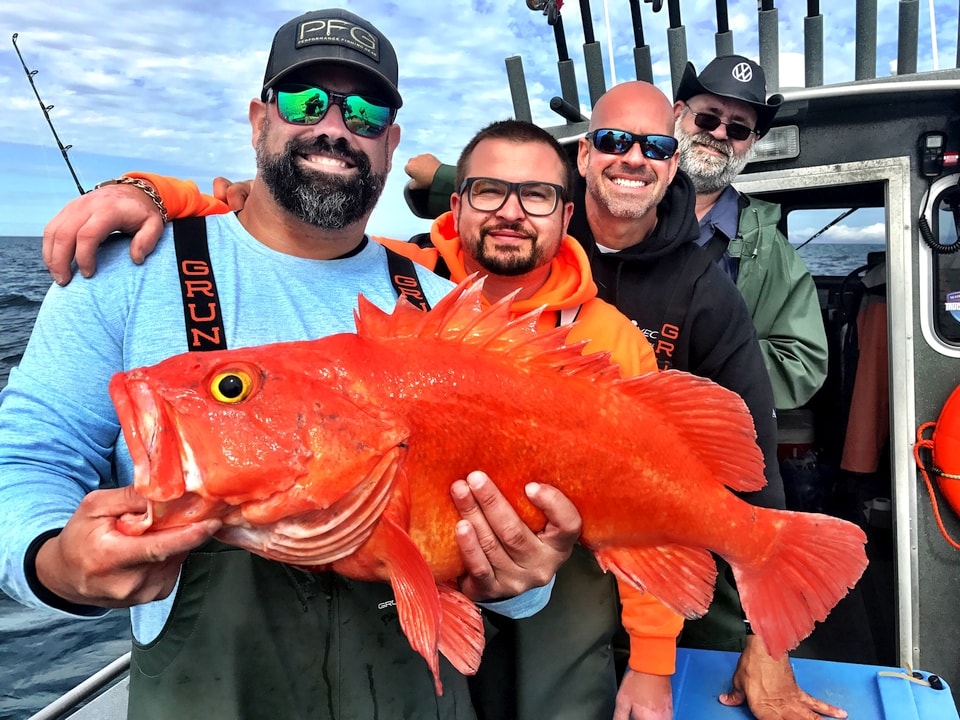
Yelloweye can be found near pinnacles, rock outcroppings, and other structure near the bottom in Alaska. We usually find them in 150 feet to 500 feet of water, though they live much deeper than that. These fish average 10 to 15 pounds and can get as large as 25 to 30 pounds. We often take these bottomfish while fishing for halibut near underwater structure in Alaska. An adult yelloweye can be up to 80 years old.
Bottomfish

Over 20 species of bottomfish are available in the waters surrounding Prince of Wales Island and they come in all colors, shapes, and sizes. Rockfish are excellent table fare and are a favorite of many of customers. While their numbers are prolific around Craig they are also a slow developing fish and we encourage our customers to limit their take of these fish.

